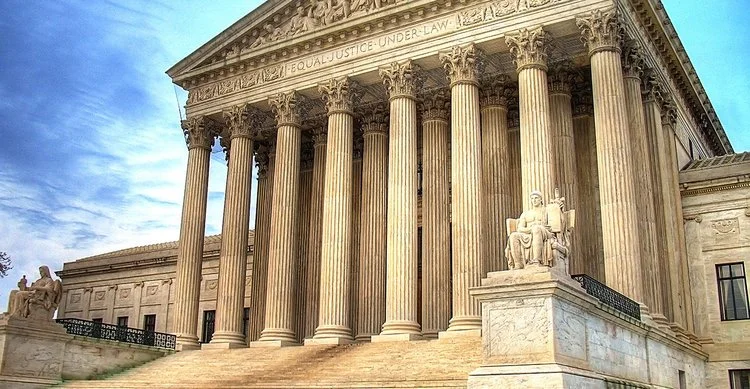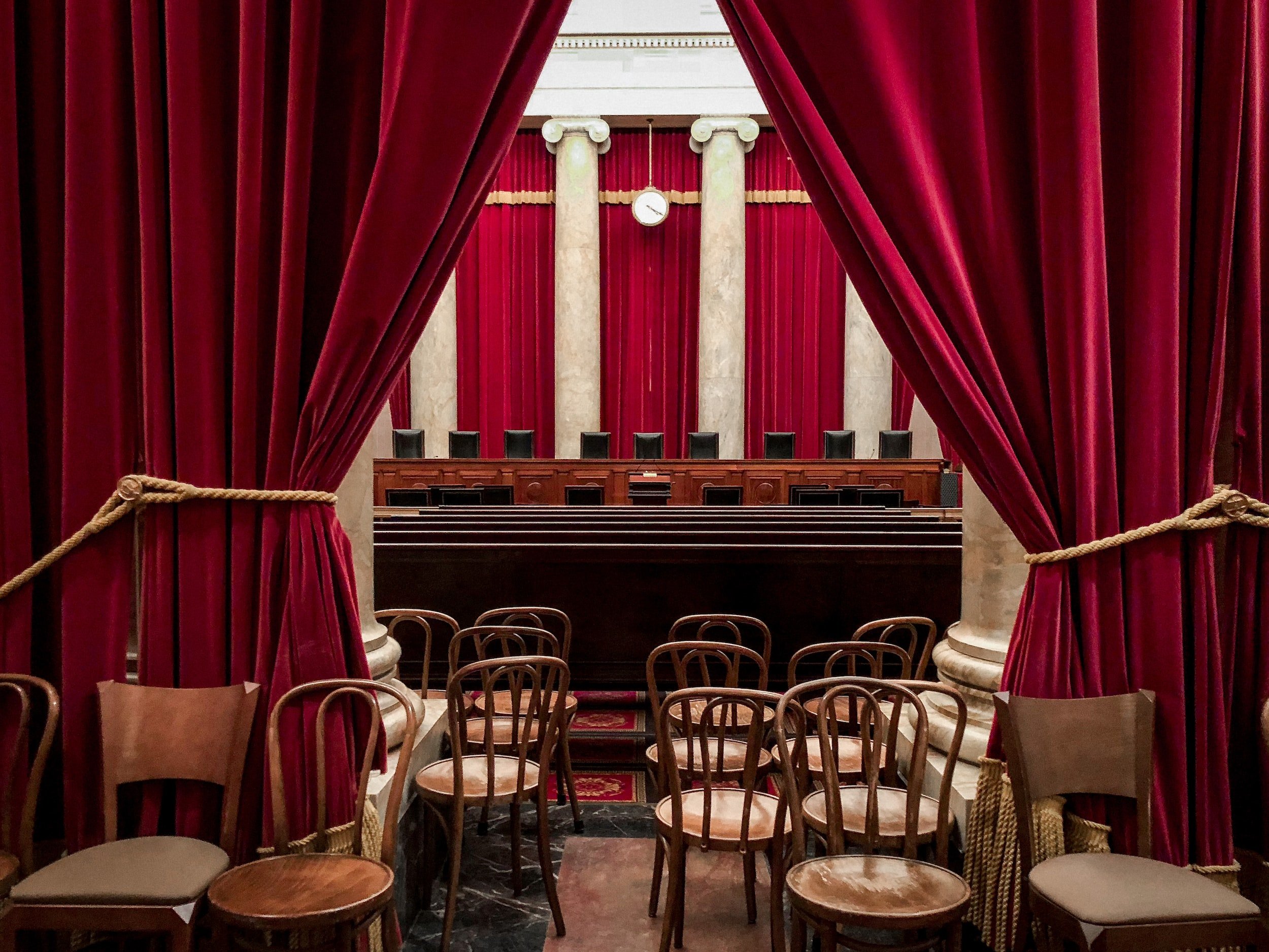Landmark Court Cases Inquiry
Each case comes with tons of visuals, videos, and information so students can learn about its constitutional connection, key facts, constitutional questions, holding, impact of case, connection to other cases, and critical questions. Each case includes a lesson, graphic organizer, and a completed rubric for teachers.
CLICK ON THE THUMBNAIL BELOW TO LEARN ABOUT EACH OF THE 14 LANDMARK SUPREME COURT CASES
Landmark Cases Rubric
Complete this graphic organizer for each case of the fourteen required landmark Supreme Court Cases.
Rank the Landmark Cases
They’re all important (that’s why we call them landmark cases), but which ones stand out at the tip top of all court cases?
Constitutional Connection
What’s the constitutional connection to each case?
Constitutional Speculation
Imagine the current Supreme Court reheard the 14 landmark cases. How would they rule, and why?
Landmark Court Case Project
Use our engaging Landmark Case project to make your court case knowledge stick
Interactive Court Cases Timeline
All the landmark Supreme Court cases in a row with essential knowledge and links.
McDonald v. Chicago (2010)
Constitutional Connection
2nd Amendment
McDonald v. Chicago, 561 U.S. 742 (2010), was a landmark decision that found that the right of an individual to "keep and bear arms", as protected under the Second Amendment, is incorporated by the Due Process Clause of the Fourteenth Amendment and is thereby enforceable against the states.
Key Facts
Several suits were filed against Chicago and Oak Park in Illinois challenging their gun bans after the Supreme Court issued its opinion in District of Columbia v. Heller (2008). In that case, the Supreme Court held that a District of Columbia handgun ban violated the Second Amendment. There, the Court reasoned that the law in question was enacted under the authority of the federal government and, thus, the Second Amendment was applicable. Here, plaintiffs argued that the Second Amendment should also apply to the states. The district court dismissed the suits. On appeal, the U.S. Court of Appeals for the Seventh Circuit affirmed.
“rights that are fundamental to the Nation’s scheme of ordered liberty” or that are “deeply rooted in this Nation’s history and tradition” are appropriately applied to the states through the Fourteenth Amendment.”
Big Question
Does the Second Amendment apply to the states because it is incorporated by the Fourteenth Amendment's Privileges and Immunities or Due Process clauses and thereby made applicable to the states?
Holding
The Supreme Court reversed the Seventh Circuit, holding that the Fourteenth Amendment makes the Second Amendment right to keep and bear arms for the purpose of self-defense applicable to the states. With Justice Samuel A. Alito writing for the majority, the Court reasoned that rights that are "fundamental to the Nation's scheme of ordered liberty" or that are "deeply rooted in this Nation's history and tradition" are appropriately applied to the states through the Fourteenth Amendment. The Court recognized in Heller that the right to self-defense was one such "fundamental" and "deeply rooted" right. The Court reasoned that because of its holding in Heller, the Second Amendment applied to the states. Here, the Court remanded the case to the Seventh Circuit to determine whether Chicago's handgun ban violated an individual's right to keep and bear arms for self-defense.
Impact of case
When the Bill of Rights was ratified in 1791, it applied only at the national level. States did not have to abide by the limits it placed on the federal government. When the Fourteenth Amendment was ratified in 1868, it placed limits on the kinds of laws states could pass. Originally meant to protect the civil rights of newly-freed slaves, the Fourteenth Amendment says that states cannot deprive people of “life, liberty, or property, without due process of law.” In the late 19th century, the Supreme Court began interpreting the word “liberty” in the Fourteenth Amendment to include some of the rights protected in the Bill of Rights. By the mid-20th century, state and local governments were required to protect most rights in the Bill of Rights, such as freedom of religion, freedom of the press, and others.
This application of parts of the Bill of Rights to state and local governments through the Fourteenth Amendment is called the doctrine of selective incorporation. In general, the Court would apply a right to the states if it determined that the right was “fundamental to ordered liberty,” or it if was “deeply rooted in this Nation’s history and tradition.”
By the 21st century, the Second Amendment was one of the few remaining rights that had not been applied to the states by the Court. The Second Amendment reads, “A well regulated militia, being necessary to the security of a free state, the right of the people to keep and bear arms, shall not be infringed.” In the 2008 case of District of Columbia v. Heller, the Supreme Court heard its first Second Amendment case in more than 60 years. The Court ruled (5-4) that the Second Amendment protected the individual right to keep handguns at home for self-defense. Since the case involved the District of Columbia (which is under the authority of Congress), the Second Amendment remained unincorporated.
Two years later, a case challenging the handgun law in the cities of Chicago and Oak Park, Illinois, reached the Court. The laws, similar to the D.C. law, effectively banned handgun possession by almost all private citizens. The Court faced the question of whether to incorporate the Second Amendment. In the ruling in McDonald, the Court asked if that right to keep arms for self-defense was fundamental or, deeply rooted in this Nation’s history and tradition. The Court held (5-4), “Heller points unmistakably to the answer. Self-defense is a basic right, recognized by many legal systems from ancient times to the present, and the Heller Court held that individual self-defense is ‘the central component’ of the Second Amendment right.” The Chicago and Oak Park handguns bans were unconstitutional.
Connections
McDonald v. Chicago takes the precedent set in D.C. v. Heller and applies it to the states, incorporating the 2nd Amendment through the due process clause of the 14th Amendment.
Critical Questions
What is the doctrine of selective incorporation?
What is the connection between the 2008 case of D.C. v. Heller and McDonald v. Chicago (2010)?
Most—but not all—protections in the Bill of Rights have been applied to state and local governments by the Supreme Court. Which Bill of Rights provisions have NOT been applied to the state and local governments through the doctrine of incorporation.
Do you agree with the Court that the right to own a handgun for self-defense is fundamental to ordered liberty and/or deeply rooted in this Nation’s history and tradition? Explain.
In his dissenting opinion, Stephen Breyer claimed that Heller’s historical analysis was flawed. Whether the right is incorporated, therefore, must be decided on the basis of other factors, such as the ascertainable motivations of the framers of the Constitution; whether there is contemporary agreement that the right is fundamental; and whether enforcing the right against the states would (as it does in the case of other incorporated rights) further the broader objectives of the Constitution, including fostering equal respect for individuals, maintaining a democratic form of government, and creating well-functioning institutions based on a constitutional separation of powers. When properly considered, according to Breyer, each of those factors argues against incorporation. Do you agree with Justice Breyer’s reasoning?
Resources
Oyez - McDonald v. Chicago
Oyez - D.C. v. Heller
Radiolab Presents: More Perfect - The Gun Show
Get AP exam-ready with diagnostic tests, online review games, test review sheets, practice quizzes, full-length practice exam, and self-guided writing workshops. We'll make studying a breeze.




























